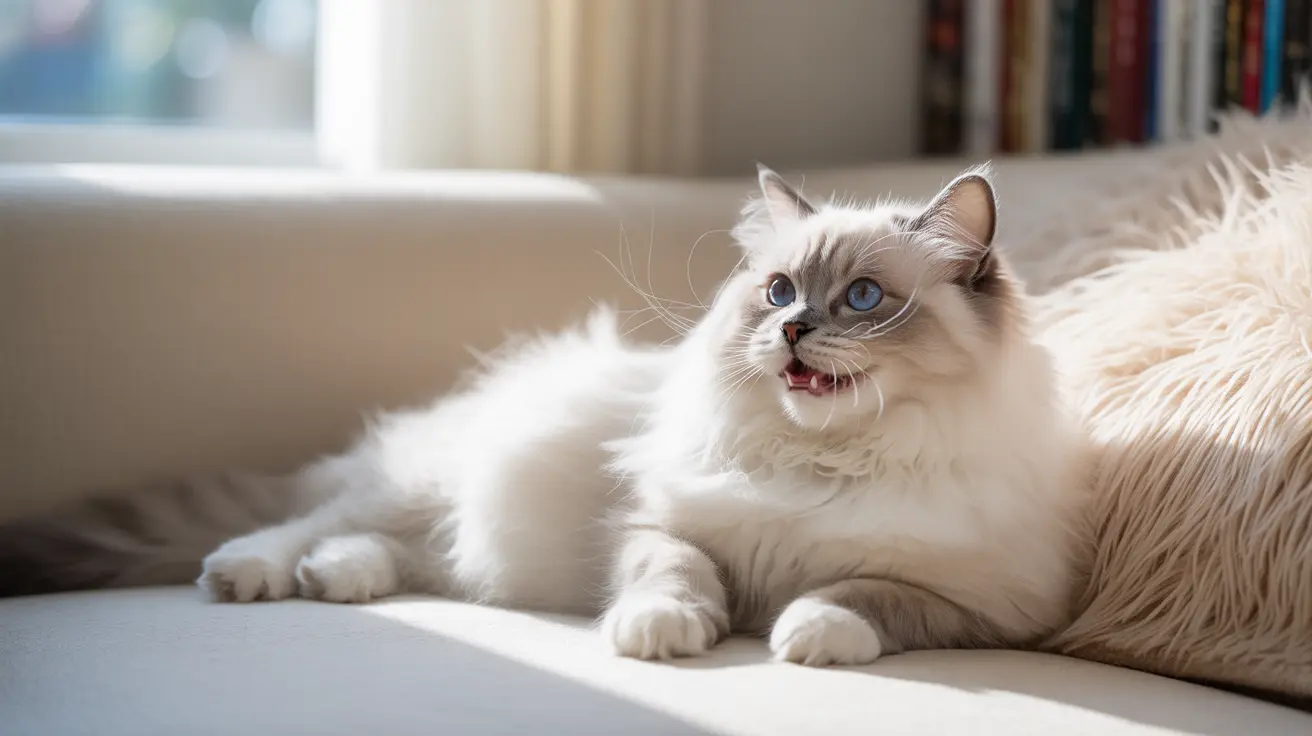The Science Behind Cat Drooling and Purring
When cats experience intense pleasure or relaxation, their bodies release endorphins – natural feel-good chemicals that can stimulate their salivary glands. This biological response often results in drooling, especially when combined with purring. The behavior frequently traces back to kittenhood, when nursing kittens would knead and purr while feeding, associating these actions with comfort and security.
The combination of drooling and purring is particularly common during moments of deep contentment, such as during petting sessions or while kneading their favorite blanket. This response is similar to Pavlov's classical conditioning, where positive experiences become linked with physical reactions.
Normal vs. Concerning Drooling Patterns
Signs of Happy Drooling
- During petting sessions
- While kneading blankets or soft surfaces
- When settling in for a nap in a favorite spot
- During moments of intense affection with their human
- When receiving chin scratches or other preferred forms of attention
Warning Signs to Watch For
- Excessive or constant drooling
- Drooling without purring or obvious contentment
- Blood-tinged or discolored saliva
- Accompanying bad breath or difficulty eating
- Sudden onset of drooling behavior
Medical Conditions That May Cause Drooling
Sometimes, drooling can signal underlying health issues, even when accompanied by purring. Common medical causes include:
- Dental disease or tooth infections
- Oral tumors or injuries
- Foreign objects stuck in the mouth
- Nausea or digestive problems
- Respiratory infections
- Exposure to toxic substances
When to Consult Your Veterinarian
While happy drooling during purring rarely requires medical attention, you should contact your vet if you notice:
- Changes in eating habits alongside drooling
- Signs of pain or discomfort
- Excessive drooling that seems unrelated to contentment
- Additional concerning symptoms like lethargy or appetite loss
Frequently Asked Questions
Why does my cat drool only when he purrs and seems relaxed?
This is typically a sign of extreme contentment and relaxation. The release of endorphins during pleasurable moments can trigger increased salivation, especially when combined with purring.
Can drooling during purring be a sign of a health problem in cats?
While usually benign, excessive drooling or drooling accompanied by other symptoms like bad breath, difficulty eating, or behavioral changes could indicate health issues requiring veterinary attention.
How can I tell if my cat's drooling when purring is normal or needs a vet visit?
Normal drooling occurs only during moments of pleasure and relaxation. If your cat drools constantly, shows signs of pain, or exhibits other unusual symptoms, consult your veterinarian.
What causes some cats to drool more during affection, like kneading or cuddling?
This behavior often stems from kittenhood nursing experiences. The combination of kneading and emotional contentment can trigger a response similar to nursing, leading to drooling.
What should I do if my cat suddenly starts drooling a lot, especially with other symptoms?
Sudden excessive drooling, particularly when accompanied by other symptoms, requires prompt veterinary attention to rule out medical issues like dental disease, injury, or exposure to toxins.
Conclusion
Drooling while purring is usually a charming quirk that shows just how happy and comfortable your cat feels with you. While most cases are completely normal, staying aware of changes in your cat's drooling patterns helps ensure any potential health issues are caught early. Remember, your veterinarian is always the best resource for specific concerns about your cat's health and behavior.






